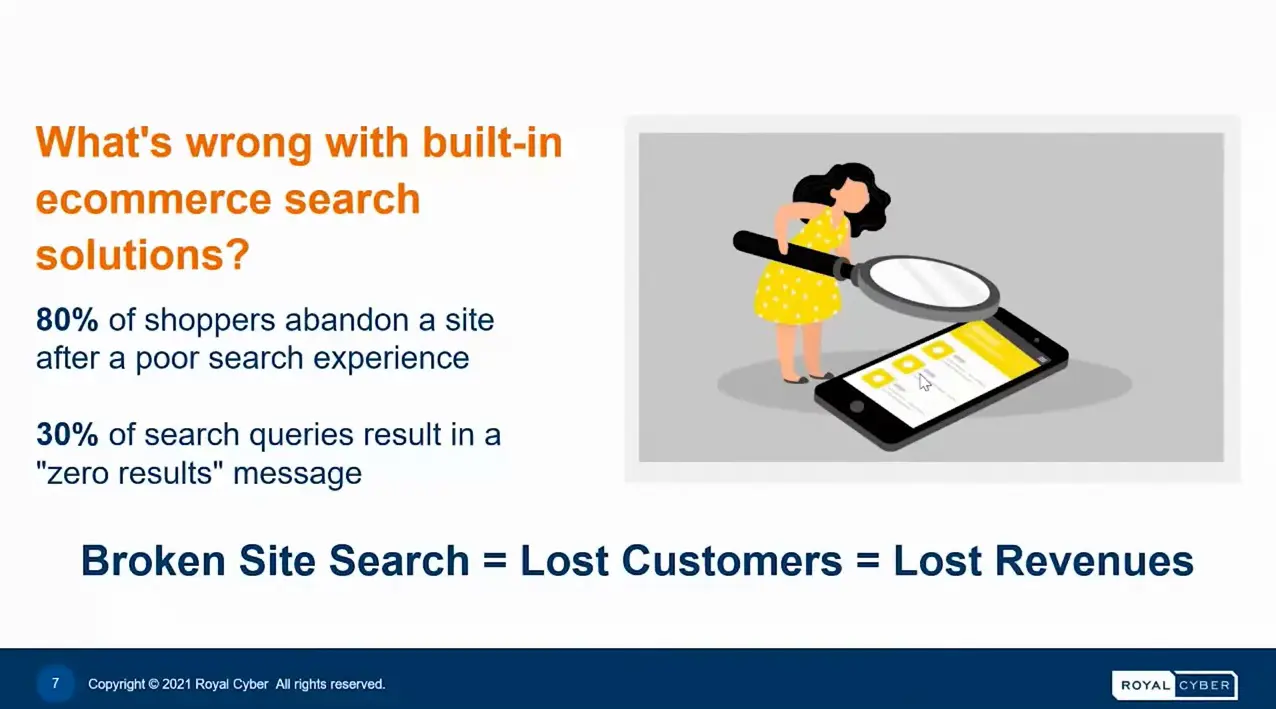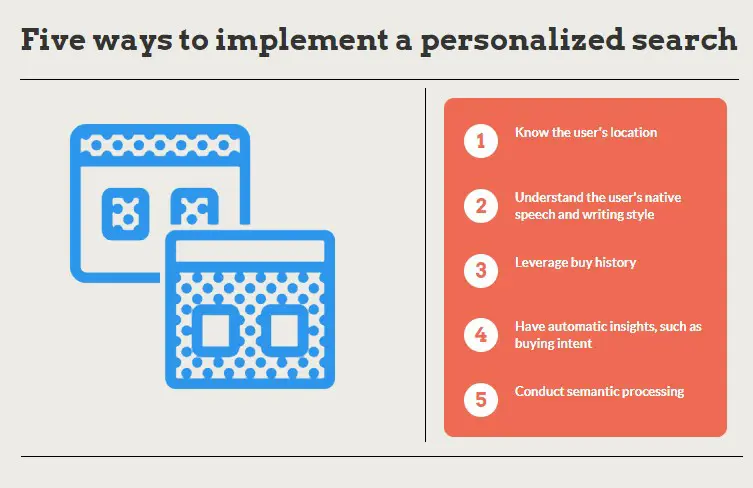Personalized search: Keep giving more to your site visitors
What is personalized search, how does it fit into the customer experience, and how can you implement it in your company? Let’s find out.

When was the last time you had to walk into a library to do research?
Between Google search and personalized search on websites you may visit, it’s usually pretty easy to find what you need.
Time and again, statistics show that personalized customer experiences are integral to business growth.
So, what is personalized search, how does it fit into the customer experience and how can you implement it within your company?
Key takeaways:
-
A personalized search is when a search engine customizes the results based on a user’s location, search history and known preferences.
-
Integrating personalized searching will reduce bounce rate and increase conversion rate.
-
A few aspects of personalized searching include accounting for user location, native language, writing and purchase history.
What is personalized search?
A personalized search is when a search engine customizes the results based on a user’s location, search history and known preferences.
Google first introduced the concept of personalized searches in 2004 to elevate the user experience and dominate as a search engine. Google ties in a user’s web history, bookmarks and Google services (e.g., Gmail, Google+, etc.) to calculate the personalized search results. Websites frequently visited by the user tend to rank higher on the search engine results page (SERP).
Today, businesses use search personalization to facilitate the customer shopping experience by displaying relevant products.
Why incorporating personalized search matters
The fundamental reason for incorporating personalized searching into your website is customer experience optimization.
Websites that don’t customize results based on customer demographics and behavior may display products that aren’t relevant to the buyer or return zero results. Research shows that 80% of shoppers will abandon a site after a poor search experience.
Integrating personalized searching will reduce bounce rate and increase conversion rate.

Five ways to implement personalized search
These are a few considerations when adding personalized searching.
-
Location
If a user in the United States searches for “football” at an online store, what would they expect to see on the results page? How about a user in the Netherlands? The word “football” would have a different meaning. In one country, it refers to the oval ball used in American football, while in the other, it’s the round ball used for soccer. Understanding a customer’s location, in this instance, is crucial for displaying relevant products.
Determining the searcher’s location is as easy as knowing their computer’s IP address. A computer can’t connect to the Internet without an IP address, and the first numbers of the address act like the zip code in a physical home address or an area code in a telephone number. It’s how businesses know where their website visitors are from and how users can type in or say “what’s the weather today” and get results for their locality.
-
Native speech and writing
Search engines must adapt to how a customer speaks or writes to provide relevant results. For example, a shopper types in “grey scarfs under $20.” The algorithm should be able to reorder the words to determine the category is “scarfs,” and there are two attributes: color and price. Additionally, it should know that if someone had typed “gray scarves under $20,” they are referring to the same thing.
Some languages place the adjective after the noun. In Spanish, for instance, a blue shirt translates to “camisa azul.” The algorithm must still determine that the category is the shirt.
Finally, there can be typos. If someone inputs a search query like pumpkin, raspberries or brocoli on a grocery site, the search engine should be able to display results for pumpkins, raspberries, and broccoli.
-
Buyer history
Personalized searching also means leveraging the customer’s search and buying history to provide relevant information. Here is where artificial intelligence (AI) and machine learning (ML) play a role.
For the first example, we have a customer revisiting an outdoor based website where they purchased fishing rods and bait. This time, they type in “shirt” into the search field. The AI should use information from the purchase history to display fishing shirts (e.g., UV-blocking) first instead of, say, hunting shirts (e.g., camouflage).
In a second scenario, there is a shopper on an electronics website, and they place the latest model of the iPhone in their shopping cart. Then, they go back to the search field and type in “phone cover.” Although the shopper hasn’t made the purchase yet, the AI should understand that the item in the shopping cart is an iPhone and first display iPhone covers. Better yet, as soon as the user adds the smartphone to the cart, it should display recommendations based on their selection, such as iPhone covers and screen protectors.
-
Automatic insights
Sometimes a user can’t exactly provide the proper phrasing for an item they need. For example, someone without a background in carpentry may need to secure a cabinet in their kitchen, so they type in “corner bracket” on a home improvement website. The search algorithm should determine that the user needs an L bracket or a corner brace and lists those results first.
Similarly, users may type in “Bounty” when they mean paper towels. While Bounty paper towels may show up first, the algorithm shouldn’t limit results to one brand or other products of the same brand, especially if the intent was paper towels.
-
Semantic processing
Search engines need to understand how a user would input a unit of measurement. For example, they may be searching for 12-inch furniture legs. They could type in any number of variations:
-
12” furniture legs
-
12 inch furniture legs
-
1 ft furniture legs
-
12in furniture legs
…and so on. The algorithm should correctly translate the characters to mean 12-inch furniture legs. The same principle applies to other areas such as megapixels, gigabytes and the metric system.

Create personalized searches with Optimizely
When you want to create a personal, consistent, and positive digital experiences for your customers, turn to Optimizely. Our Digital Experience Platform (DXP) helps you provide a personalized search solution that enhances your brand.
Contact Optimizely today to learn how our DXP can help you engage with more customers and grow your business.
